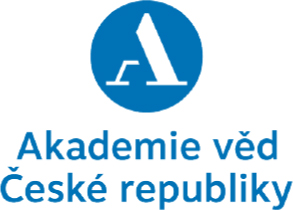Single motherhood is known to have negative consequences on the wellbeing and life chances of mothers and their children. It appears as a consequence of parental dissolution or birth to an unpartnered woman. There are studies of divorce and union separation in the Czech Republic but less is known about women who bear their children outside unions. The goal of the paper is to determine if the proportion of mothers who bear children without having a partner changes in time and if there is a change in the socio-demographic characteristics of mothers. As the data on unpartnered childbearing are limited, the paper also aims to map the available data sources and their possibilities and limitations.
Two data sources are used to measure births to unpartnered mothers, the birth register (BR) and the Labour Force Survey (LFS). BR data include mothers of liveborn infants in 2007–2014 (n = 886,467) but do not contain a direct measure of family arrangement. Single mothers are defined as those who did not provide information about newborn’s father. The LFS dataset is limited to households with a member under one year of age interviewed in 1993–2010 (n = 8,172). Single motherhood is defined as an absence of mother’s partner in the household. Results about single motherhood are reported for all households and for those headed by one of the infant’s parents.
The main independent variable is time period. Three maternal characteristics are controlled for, namely education, age, and parity.
The proportion of children with unidentified fathers declined slightly from about 10% in 2007 to 8% in 2014. Both measures of unpartnered childbearing based on household composition suggest a growing trend in the 1993–2007 period and then stabilisation. The proportion of mothers without partners among all households with an infant rose from 7% (1993–1995) to 12–13% (2005–2010). As for households headed by child’s single parent, the number of single mothers is underestimated because a substantial proportion of tem live in households headed by other persons. There is a growing trend from 3% to 8%. These figures also indicate that the proportion of single mothers who live in their own households increased from 37% (1993–1995) to 60% (2008–2010).
Logistic regression was used to test if the trends apply to mothers in all socio-demographic groups. The results suggest that each of the measures of unpartnered motherhood is strongly associated with low (i.e. primary) education, first parity, and low or high age of mothers (up to 25 or above 35 y.o.). Interaction between time period and maternal characteristics shows that the decline in the non-identification of fathers occured in all groups of mothers except those with low (i.e. primary or vocational) education and those of third or higher parity. These groups show a growing tendency not to acknowledge fathers. The absence of fathers in households with infants exhibited a similar trend in all groups of mothers.
In sum, different definitions result in different estimates of unpartnered motherhood. Depending on the measure, the ratio of births outside unions was estimated between 8% and 12% at the end of the 2000s (i.e. the time period of 2008–2010 when all of the time series overlap). Measurement based on the absence of father in any type of household provides the highest estimate of the proportion of unpartnered childbearing, while the other two measures lead to lower estimates.The results regarding temporal trends in unpartnered childbearing also depend on measurement. This suggests that the absence of coresident partner and denial of information about child’s father are different events and they are likely to further differentiate in the future. The fact that the growing tendency to acknowledge paternity is not accompanied by higher numbers of coresident unions indicates a changing norm of fatherhood. The observed trends also imply that non-marital birth and the absence of paternal information, i.e. the two pieces of information recorded in the birth register, are becoming less and less informative regarding the composition of households of newborns. This makes future research more dependent on survey data.



